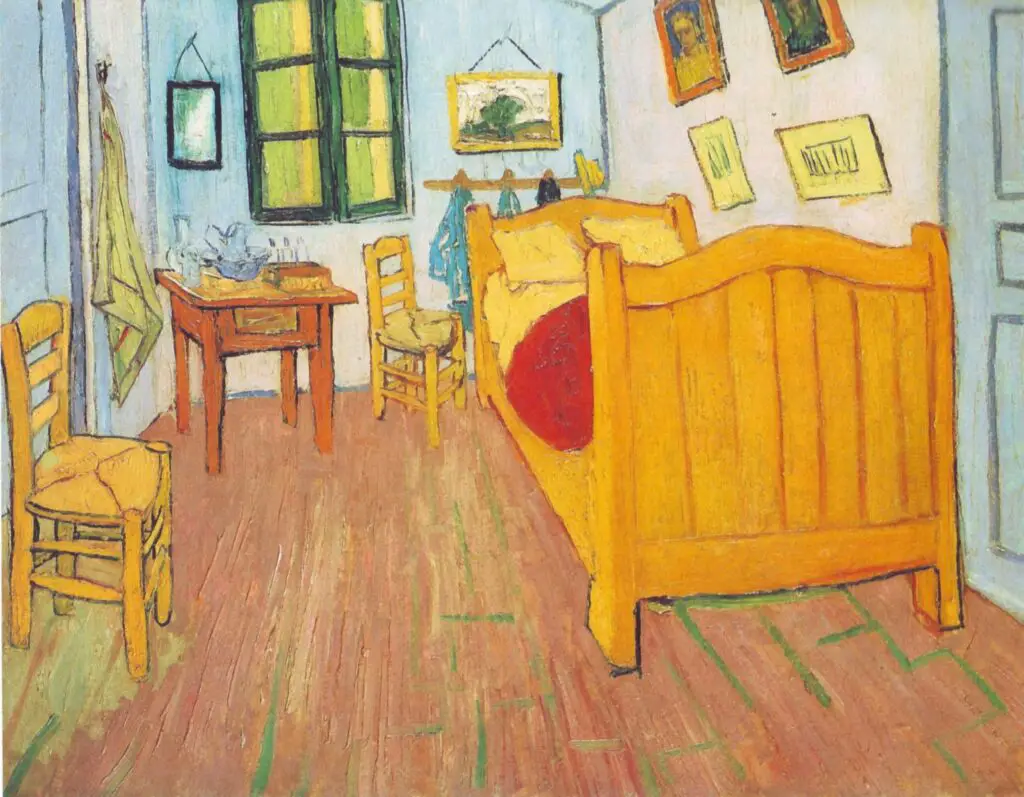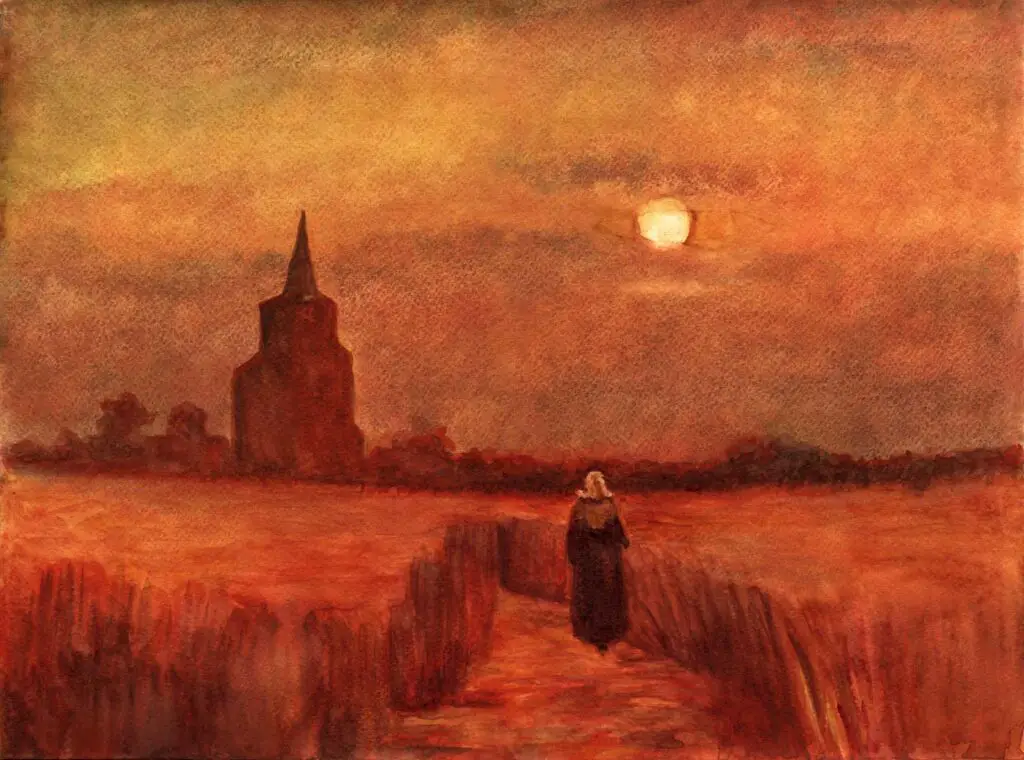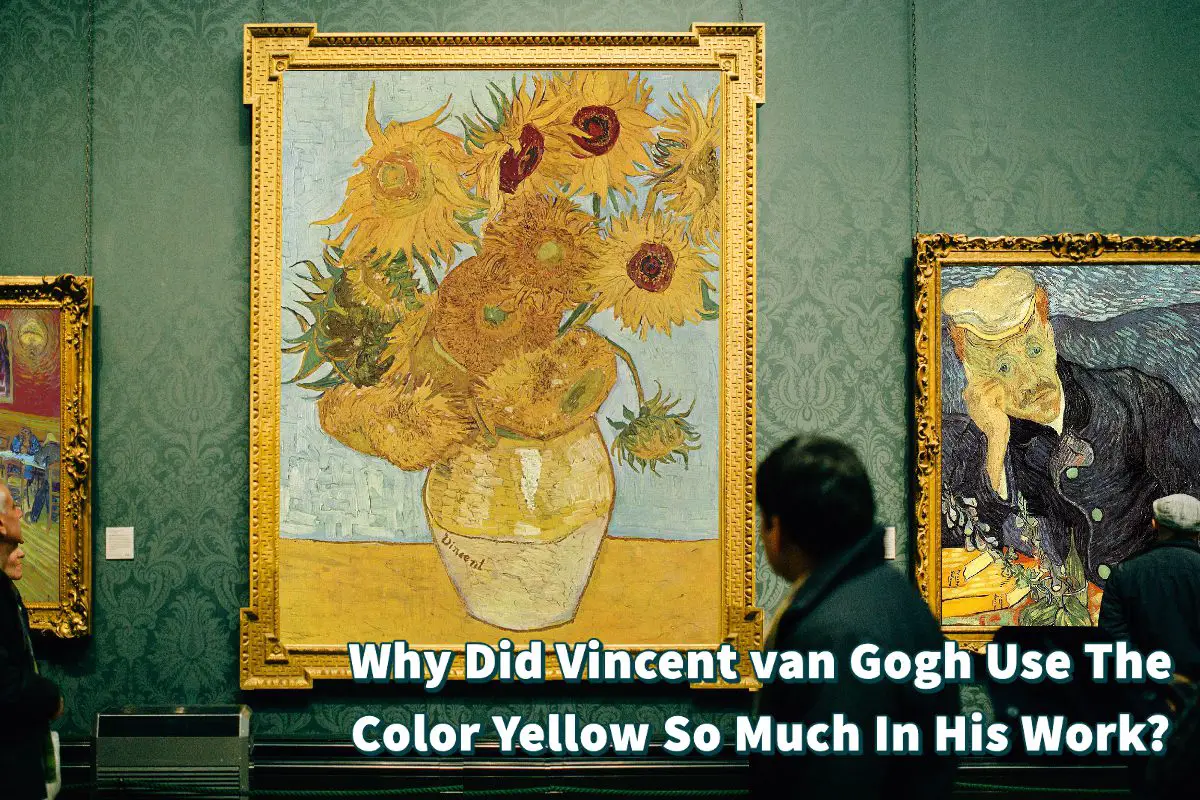When you view Vincent van Gogh’s paintings, you will notice that Vincent Van Gogh uses a lot of vivid colors. One of the vivid colors that he uses a lot in his work is yellow.
There have been many theories about why Vincent Van Gogh used the yellow color so much in his artwork. Some thought it was due to his medical conditions or medication not to see the color yellow. Before he was hospitalized, Vincent Van Gogh also used many yellow colors. So the use of the yellow color is more than likely a stylistic and artistic decision – Vincent Van Gogh loves the yellow color in his artwork. Yellow is a great color to use with blue, white, and other contrasting colors.
Table of Contents
Exploring the Predominance of Yellow in Vincent van Gogh’s Artistic Palette
The canvases of Vincent van Gogh are a symphony of bold, vivid hues, with yellow playing a lead role in this vibrant color ensemble. This conspicuous use of yellow in Van Gogh’s work has spurred various theories and speculations.
While some attribute it to possible medical conditions or the side effects of his medication, which might have altered his perception of colors, a deeper dive into his artistic journey reveals a different story. Van Gogh’s penchant for yellow was evident even before his hospitalization, suggesting that his choice was less about compulsion and more about artistic preference.
For Van Gogh, yellow was not just a color; it was a tool to achieve striking contrasts and harmony, particularly when paired with blues, whites, and other complementary shades. Here are some of the reasons why Vincent Van Gogh may have used the color yellow in his artwork.
Van Gogh’s Medical diagnosis and The Yellow color
Some people have said that Van Gogh liked to use the color yellow because it had to do with the medical treatment he was under, in particular, his treatment under Dr. Gachet at the Saint-Remy Asylum. The post-Impressionism Dutch painter Vincent van Gogh (1854-1890) is well known for his years of suffering from mental illness. He spent time in a mental health facility where he painted some of his best work.
Over 150 doctors tried to diagnose van Gogh and his self-destructive behavior. The doctors diagnosed him with bipolar disorder, schizophrenia, neurosyphilis, interictal dysphoric disorder, sunstroke, acute intermittent porphyria, temporal lobe epilepsy precipitated by the use of absinthe in the presence of an early limbic lesion, to Ménière’s disease.
When he was at the asylum in Saint-Remy in 1889, it is believed that his doctor prescribed digitalis, which is a treatment from the foxglove plant. In his painting “Portrait of Dr. Gachet,” some foxglove plants can be seen in the painting. Foxglove was likely a plant that Dr. Gachet used on his patients including Vincent van Gogh.

At this time, digitalis was widespread for all kinds of medical conditions. There was over 73 Disease the medical profession thought that the use of digitalis or Foxglove could cure. A side effect of the overuse of digitalis or foxglove could lead to digitalis-induced xanthopsia.
Many believe that van Gogh suffered from digitalis-induced xanthopsia, leading to symptoms such as chlorosis (green vision), photopsia, photophobia, and visual hallucinations. In other words, digitalis-induced xanthopsia can lead to visual and color problems.
This is important because if van Gogh suffered from digitalis-induced xanthopsia, it could help explain his use of yellow. But many, myself included, believe that van Gogh intentionally used yellow for style purposes and not because he was suffering from digitalis-induced xanthopsia.
It is doubtful that Dr. Gachet allowed van Gogh to overdose on digitalis. He was well aware of the side effects of the drug and knew how the side effects would affect Van Gogh. Dr. Gachet even wrote in some medical journals of his day about the side effects of the digitalis drug and how caution needs to be used when prescribing it.
Dr. Gachet tested van Gogh’s vision in 1899 and found his vision to be excellent in both short-range and long-range distances. He also performed a color test, and Van Gogh’s recognition and use of color were said to be perfect.
If van Gogh had overused the digitalis drug, he would have gone in and out of use and had periods he could paint and maybe periods he could not. That’s why even if van Gogh had been given digitalis, it is unlikely he would have been given a dose that was harmful or changed his vision or sight in any way.
Van Gogh and The Yellow Color
Yellow is a predominant theme in many of Van Gogh’s artwork, even before being admitted to the Asylum at Saint-Remy. His iconic sunflowers are an example of flowers he painted that were predominately yellow.

Paul Gaugin (1848 – 1903) lived with Vincent Van Gogh for a while; the two artists lived and painted in the same house in Southern France. Even though they have different styles, they have some similarities.
Paul Gaugin made the following comment about Vincent van Gogh and his love of the yellow color when he said:
“Oh yes, he loved yellow, this good Vincent, this painter from Holland – those glimmers of sunlight rekindled his soul, that abhorred the fog, that needed the warmth.”
Paul gaugin
The color yellow is a great color to help balance some other colors as blue and white. You can see this kind of balance with blue, white, and yellow in a lot of van Gogh’s paintings.
If van Gogh were suffering from digitalis-induced xanthopsia, white and yellow would have looked similar, and blue tones would have looked green.
Van Gogh Loved Intense and Contrasting Colors
It is well-known that van Gogh loved intense and contrasting colors. The intense and contrasting colors were part of his fascination with Japanese woodblock prints.
Many Japanese woodblock prints used bright, contrasting, and intense colors, including yellow. Japanese woodblock prints also used a lot of repeat patterns that you can also see in van Gogh’s work.

There is no doubt that van Gogh loved the color yellow and used it in his paintings. Here is a great quote that Vincent Van Gogh said about the color yellow:
“Yellow is capable of charming God.”
Vicent Van Gogh
Van Gogh And The Yellow Sun
There is no doubt that van Gogh loved the bright yellow sun. Some people say that his use of yellow comes from the sun or sun worship. There is no evidence that he was a sun worshipper, but we know that van Gogh loved and was fascinated by the bright yellow sun.

Vincent van Gogh himself has said this about the sun and his love for the bright yellow sun.
“There is a sun, a light that for want of another word I can only call yellow, pale sulphur yellow, pale golden citron. How lovely yellow is!”
Vincent Van Gogh
Vincent Van Gogh’s use of yellow was not a fluke but was a deliberate style choice. Van Gogh knew and understood that yellow had power for his artwork and paintings.
For Van Gogh, using yellow was a stylistic choice and was part of his overall creative process. Van Gogh was a great artist who understood the power of colors like yellow.
Anita Louise Art is dedicated to art education, great artists, and inspiring others to find and create their art. We love art that uplifts and inspires. #ArtToMakeYouSmile! #ArtToMakeYouHappy!
If you want to see any of my art, you can find out more by clicking here. If you are interested in what inspires me and my paintings, you can discover more by clicking here.
We have a free newsletter and would love you to be part of our community; you can subscribe to the newsletter by clicking here. If you have any questions, I would be happy to talk to you. You can reach me, Anita, by clicking here.
Subscribe to our Anita Louise Art YouTube Channel filled with great videos and information by clicking here.
Join us for our podcast “5 Minutes With Art.” Spend just 5 minutes a week with us to discover and learn about great art and artists. You can find out more about our podcast by clicking here.
Related Questions
What Was The Impact Of Vincent Van Gogh On The Art World?
Van Gogh used color, form, and emotions in his art. He had a bright palette that was individualized for his time. Even though he did not see a lot of success during his life after he died, the impact of his art can be seen in both the Expressionism and Fauvism movements that were taking place in Europe.
By clicking here, you can learn more by reading What Was The Impact Of Vincent Van Gogh On The Art World?
How Much Is Van Gogh’s Starry Night Worth?
Van Gogh used color, form, and emotions in his art. He had a bright palette that was individualized for his time. Even though he did not see a lot of success during his life after he died, the impact of his art can be seen in both the Expressionism and Fauvism movements that were taking place in Europe.
By clicking here, you can learn more by reading How Much Is Van Gogh’s Starry Night Worth?, And Other Facts.

